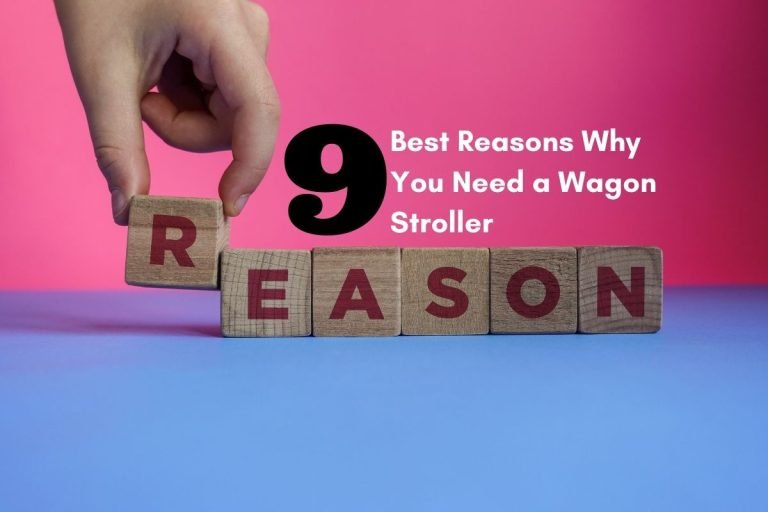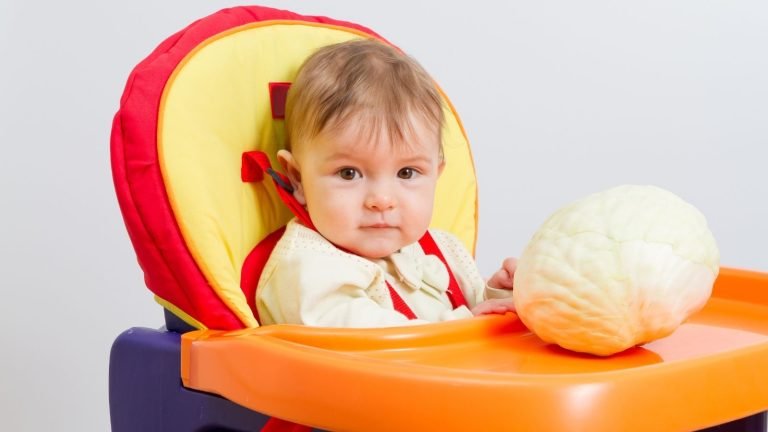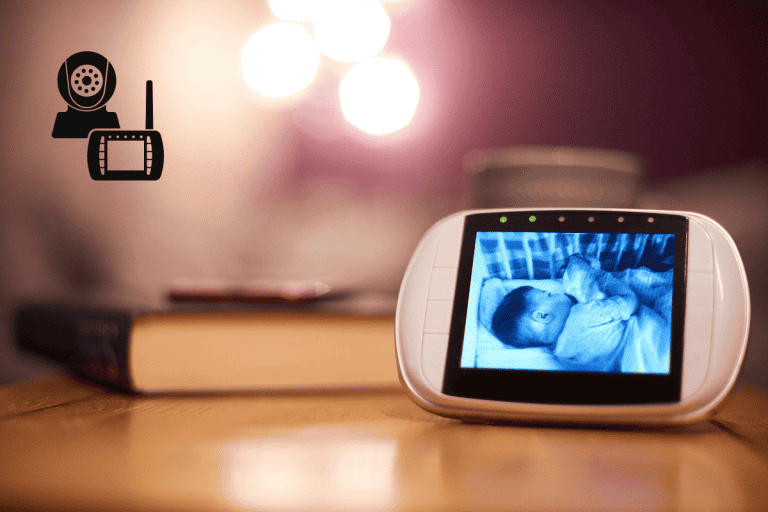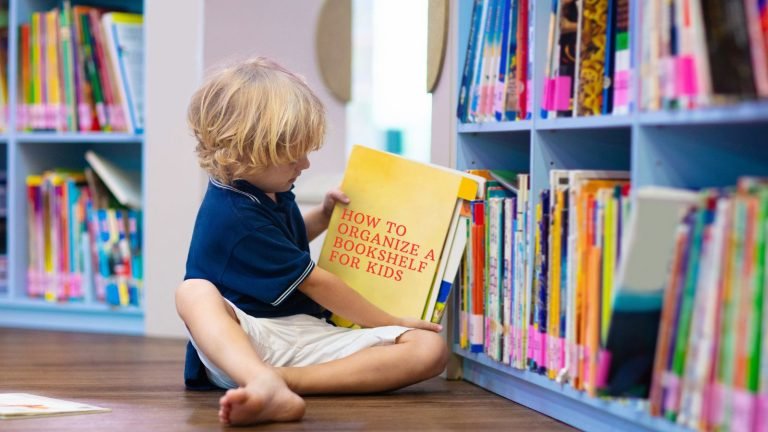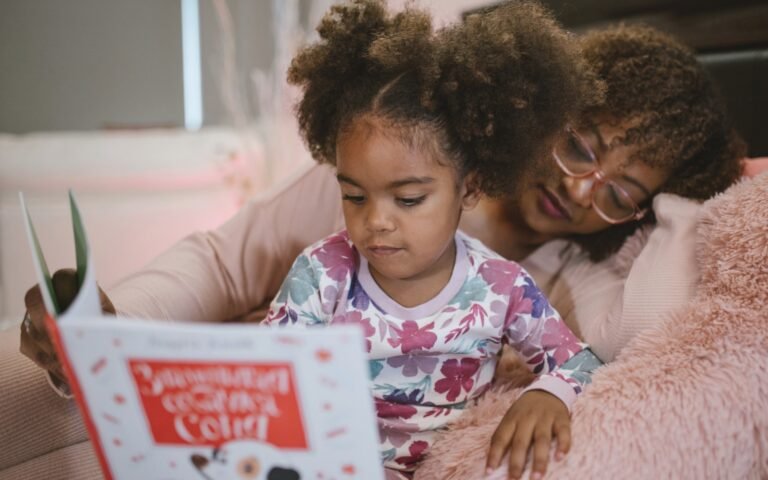Are Humidifiers Safe for Babies? Common Concerns and Misconceptions
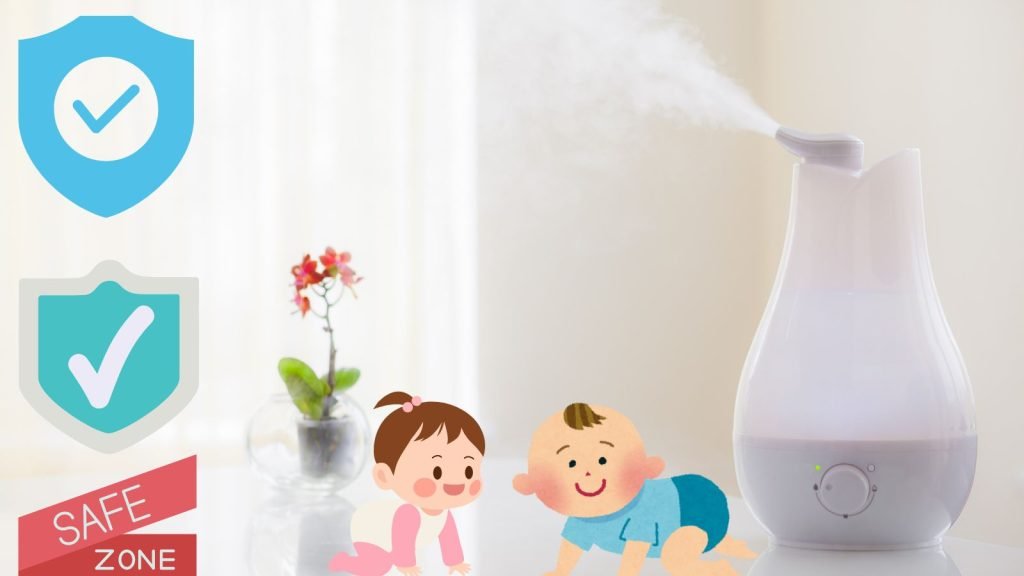
Are humidifiers safe for babies? Many parents ask, especially when dealing with dry air or a congested little one.
While humidifiers can be helpful, they also come with potential risks you should know about. This post will clarify any confusion about infant humidifier safety, address key concerns, and break some common myths.
By the end, you’ll have the information you need to decide whether a humidifier is right for your baby’s nursery, ensuring both comfort and safety for your little one.
Key Takeaway – Are Humidifiers Safe for Babies
- Cool-mist humidifiers are safer for babies, reducing burn risks while effectively adding moisture to the air.
- Regular cleaning and maintenance are crucial to prevent mold and bacteria growth, ensuring a safe environment for the baby.
- Proper placement and maintaining humidity levels between 30% and 50% are key to the baby’s comfort and safety.
Types of Humidifiers for Babies
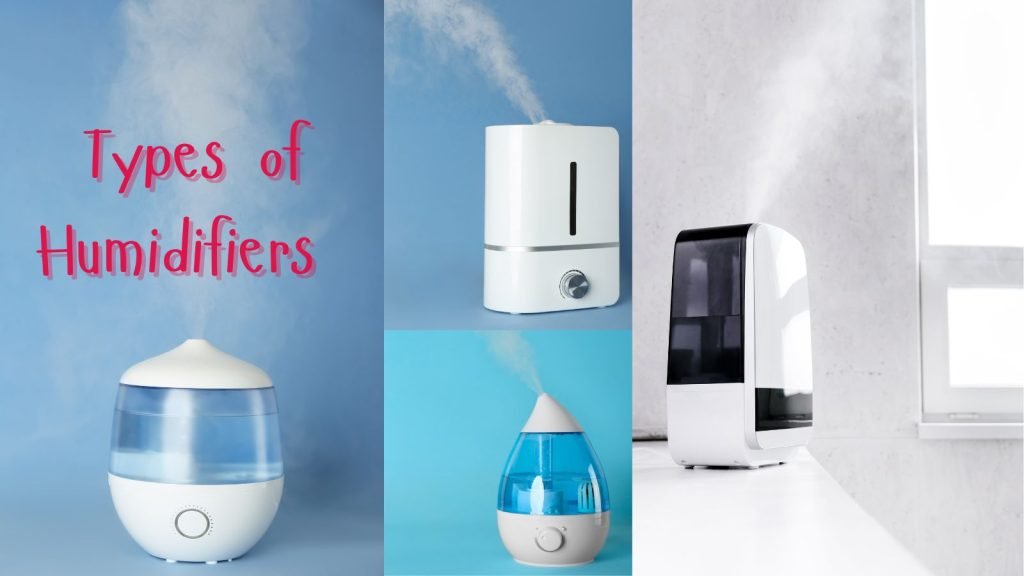
Cool Mist Humidifier
Cool-mist humidifiers are popular for babies because they add moisture to the air without heat, making them safer for little ones.
These devices can help ease your baby’s congestion and dry skin issues, especially in the dry winter.
The cool mist can reduce coughing and make your baby’s room more comfortable.
Many parents choose this type to avoid the risk of burns. These humidifiers often run quietly, doubling as a gentle noise machine to help their babies sleep better.
Warm Mist Humidifier
Warm mist humidifiers and vaporizers heat the water inside to create steam, offering quick relief for a congested baby.
The warm mist can help loosen mucus and clear airways, making breathing easier for your baby.
However, if knocked over, these devices pose a burn risk, so it’s best to place them out of reach of curious little hands.
Some parents find them particularly helpful for babies with asthma or severe congestion.
Always follow safety guidelines when using warm mist humidifiers. They can be effective but need extra care to ensure your baby’s safety.
Ultrasonic Humidifier
Ultrasonic humidifiers use high-frequency vibrations to produce a fine mist, making them super quiet and perfect for light sleepers.
They can generate both cool and warm mist, efficiently adding moisture to the air.
Many models have adjustable settings, allowing you to customize the humidity level.
However, if you use hard water, they might release white dust, so it’s better to use distilled water.
These humidifiers are popular for parents looking for a universal solution to ease their baby’s respiratory issues.
Comparing Different Types of Baby’s Needs
When choosing a humidifier for your baby, it’s important to think about what you specifically need.
Cool-mist humidifiers are generally safer and can be used all year round.
Warm mist models can be more effective for severe congestion but must be placed carefully to avoid burns.
Ultrasonic humidifiers offer versatility but might require a bit more maintenance. All types help maintain ideal humidity levels, typically 30-50%.
Consider factors like noise level, ease of cleaning, and room size. Some models are even dishwasher-safe, making them easier to clean.
Remember, humidifiers can pose risks if not properly maintained, so regular cleaning is important to prevent mold and bacteria growth. Choose a model that fits your lifestyle and your baby’s needs.
Benefits of Using a Humidifier for Your Baby
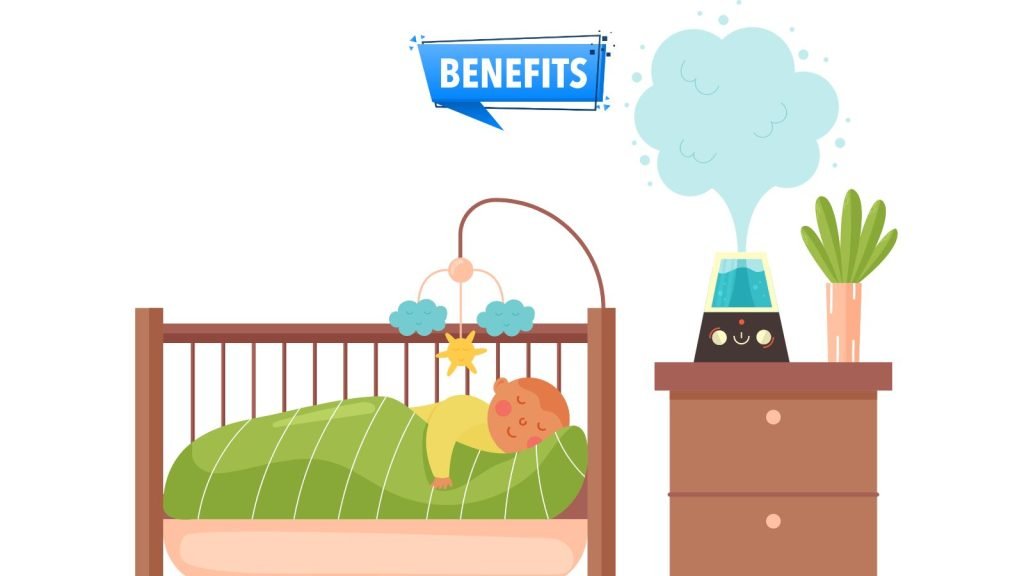
Alleviating Congestion and Respiratory Issues
Baby humidifiers can make a big difference in respiratory health. They add moisture to the air, helping to thin mucus and clear airways.
This can reduce coughing and ease congestion, especially during colds or if your baby has asthma.
The added humidity makes breathing easier, keeping your little one comfortable.
For the best results and safety, opt for a cool-mist humidifier to keep your baby safe while providing relief.
Combating Dry Air and Its Effects
Dry winter air can be tough on your baby’s delicate skin. Adding a humidifier in your baby’s room can help by adding moisture to the air.
This is especially beneficial in areas with dry climates or when indoor heating is used frequently.
Proper humidity levels can prevent dry, itchy skin and chapped lips, keeping your baby more comfortable.
Remember, the aim is to maintain ideal humidity, not turn the room into a rainforest.
Helping Prevent and Manage Eczema and Dry Skin
Humidifiers are great for managing skin conditions in babies. They help prevent and soothe eczema flare-ups by keeping the skin hydrated.
The additional moisture in the air can reduce irritation and itching, providing gentle relief for babies with sensitive skin.
While it’s not a cure-all, many parents find that a humidifier is a helpful addition to their baby’s skincare routine, especially for those prone to dryness.
Potential Sleep Benefits (White Noise Feature)
Many baby humidifiers also function as noise machines, providing a soothing background hum.
This gentle sound can help mask sudden noises that might wake your baby, creating a more restful sleep environment.
Combining consistent sound and improved air quality can help your little one sleep better.
Some parents even find that the soft noise from the humidifier becomes a sleep cue for their baby.
While this isn’t the main purpose of a humidifier, it’s a nice bonus for sleep-deprived parents and restless babies.
Safety Concerns and Misconceptions of Humidifier
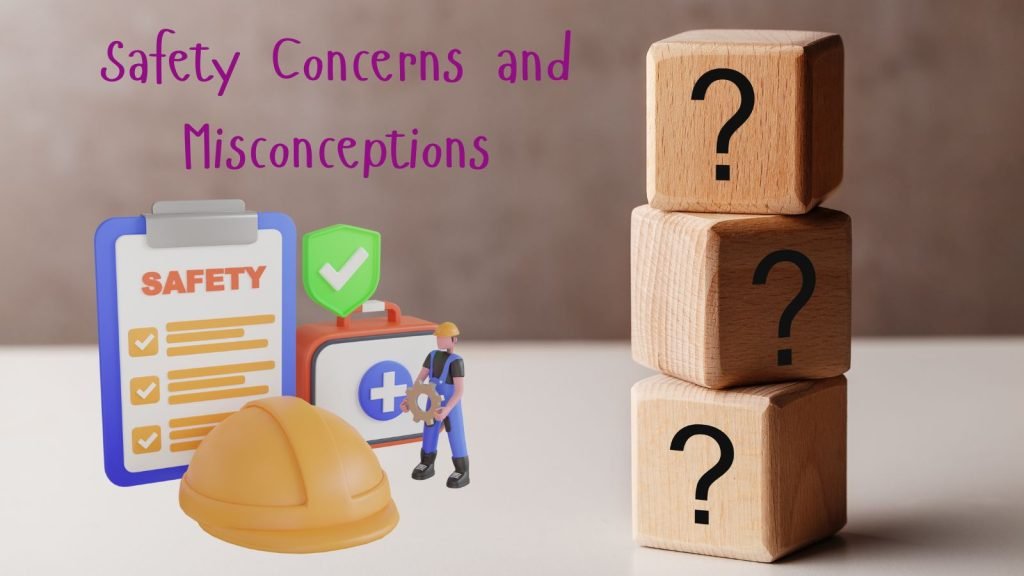
Is a Humidifier Safe for Babies?
Baby humidifiers are safe and beneficial when used properly. They can help ease breathing issues and dry skin. However, they must be maintained well.
Clean your humidifier regularly to prevent mold and bacteria buildup, and use distilled water to avoid dispersing minerals and particles into the air.
Always place the humidifier on a stable surface outside your baby’s reach. Proper use of a humidifier can improve air quality and keep your baby comfortable.
Warm Mist vs. Cool Mist Safety Considerations
Safety should be your top priority when choosing a humidifier for your baby. Cool-mist humidifiers are typically much safer for babies. They don’t use hot water, eliminating burn risks.
Warm mist humidifiers or vaporizers heat the water inside to create steam.
Cool-mist models are a better choice for households with curious little ones, and they do a great job keeping the room humidified.
Risk of Burns from Warm Mist Humidifiers
Warm mist humidifiers carry a burn risk. They use hot water to produce steam, which can scald if spilled.
If you choose this type, place it well out of your baby’s reach. Never put it on the floor or near the crib.
Some parents use them when their baby is sick or has severe congestion, but they always follow exacting safety precautions. For everyday use, cool-mist options are safer choices.
Mold and Bacteria Growth Concerns
If not managed properly, humidity can promote mold and bacteria growth. To prevent this, clean your humidifier regularly.
Empty the tank daily and dry all parts thoroughly. Some models are dishwasher-safe, making cleaning easier.
Use fresh water each time you turn the humidifier on. Avoid high humidity levels (over 60%), as this can promote mold growth in the room.
A clean humidifier helps prevent mold and keeps the air healthy for your baby.
Misconceptions About Humidifier Dependency
Some people worry that babies don’t need a humidifier or might become dependent on one. This is a misconception.
Humidifiers add moisture to dry air; they don’t create dependency.
They’re not always necessary but can be helpful tools, especially in dry winter air or during illness. Babies can’t become reliant on humidifiers for breathing normally.
They’re just devices to keep the air at a comfortable humidity level, which can help with various issues from congestion to dry skin.
Proper Humidifier Use in the Nursery
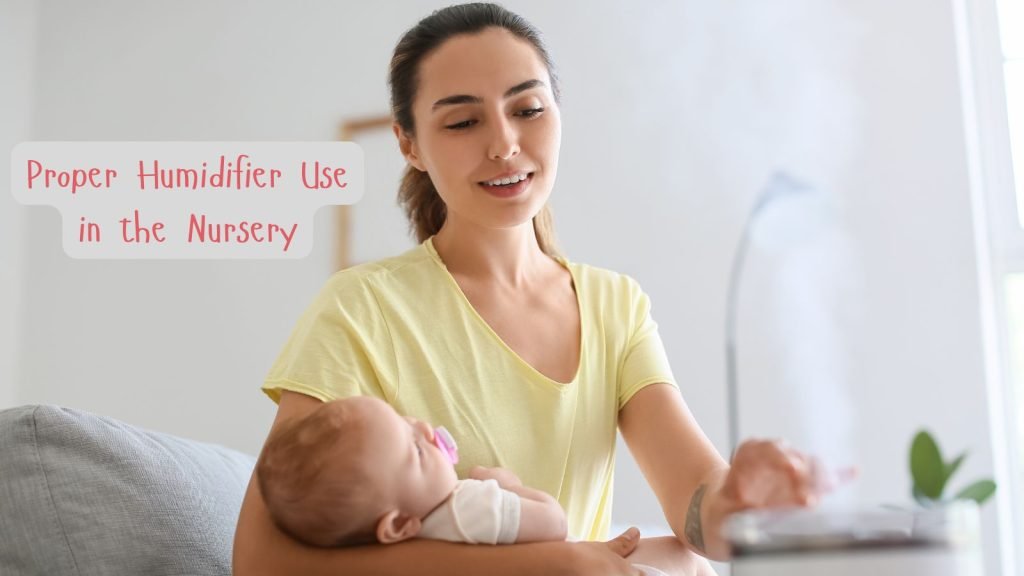
Where to Place the Humidifier (Distance from Crib)
Place the humidifier carefully in your baby’s room. Keep it at least 3 feet from the crib to prevent direct mist.
Set it on a stable surface like a dresser or shelf, out of reach of curious hands. Avoid carpets or areas near electrical outlets.
Proper placement ensures even moisture distribution and keeps your baby safe from spills or tipping accidents.
Optimal Humidity Levels (Using a Hygrometer)
It is important to keep the right humidity level in your baby’s room. A hygrometer can help you measure and maintain the ideal 30-50% humidity range.
This level helps your baby breathe easier without encouraging mold growth.
If the humidity is too low, the air stays dry; if it is too high, mold and bacteria can thrive.
Adjust your humidifier settings according to the hygrometer readings to ensure your baby is comfortable and healthy.
Avoiding Over-Humidification
High humidity can generate problems. It can make the room feel stuffy and promote mold growth.
Signs of over-humidification include condensation on windows or wet surfaces.
If you notice these, turn the humidifier down or off. Use it only when needed, like during dry winter air months or when your baby has congestion.
Finding the right balance is essential – you want to add moisture without creating a tropical environment in the nursery.
Adding Moisture to the Air Safely
Adding moisture to your baby’s room should be done safely.
For cleaner air, use distilled water to prevent the spread of minerals and other particles. Clean your humidifier regularly to avoid germ buildup.
For cool-mist humidifiers, change the water daily and dry all parts thoroughly. If using a warm-mist type, take extra safety precautions to prevent burns.
Regular maintenance keeps the air clean and healthy for your baby to breathe.
Maintenance and Cleaning of Humidifier
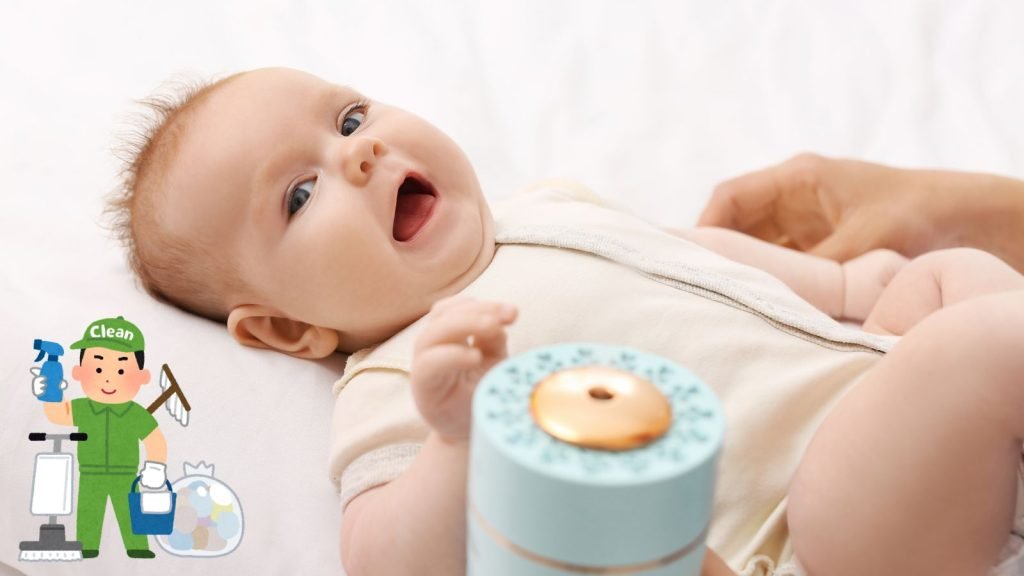
Preventing Mold and Bacteria Buildup
Regular maintenance of your baby’s humidifier is essential to prevent mold and bacteria growth.
Drain the water tank daily, wipe it dry, and allow all parts to air dry completely before reassembling.
Use fresh water every time you turn the humidifier on. Clean the unit thoroughly at least once a week, more often if your baby has asthma or is prone to allergies.
These steps help keep your baby safe from harmful microorganisms that could affect their health.
Cleaning Procedures and Frequency
Clean your humidifier weekly to ensure it runs safely. For cool-mist humidifiers, unplug the unit and disperse it.
Wash the base and tank with vinegar or mild soap. Rinse thoroughly and dry all parts.
Some models have dishwasher-safe components, making cleaning easier.
When using vaporizers that heat water inside, it is important to follow the manufacturer’s instructions to ensure you use the device safely and effectively.
Regular cleaning helps maintain good air quality in your baby’s room and prolongs the life of your device.
Water Quality Considerations
The type of water you use in your humidifier matters. Distilled water is the best choice as it’s free from minerals and other particles that can become airborne when vaporized.
This prevents white dust from forming on surfaces in your baby’s room.
If distilled water isn’t unavailable, use filtered, boiled, and cooled water.
Avoid tap water, especially in an area with hard water, as it can leave mineral deposits in the humidifier and affect its performance.
When to Replace Your Humidifier
Even with proper care, humidifiers don’t last forever.
Signs that it’s time for a replacement include persistent odd smells, visible mold that won’t clean off, or a unit that doesn’t produce mist efficiently.
Most humidifiers last 2-3 years with regular use and proper maintenance. When buying a humidifier, consider models with contracts.
If your current humidifier isn’t working well, it might be time for a new one to ensure you’re adding moisture to the air safely and effectively for your baby’s benefit.
Expert Recommendations Humidifier
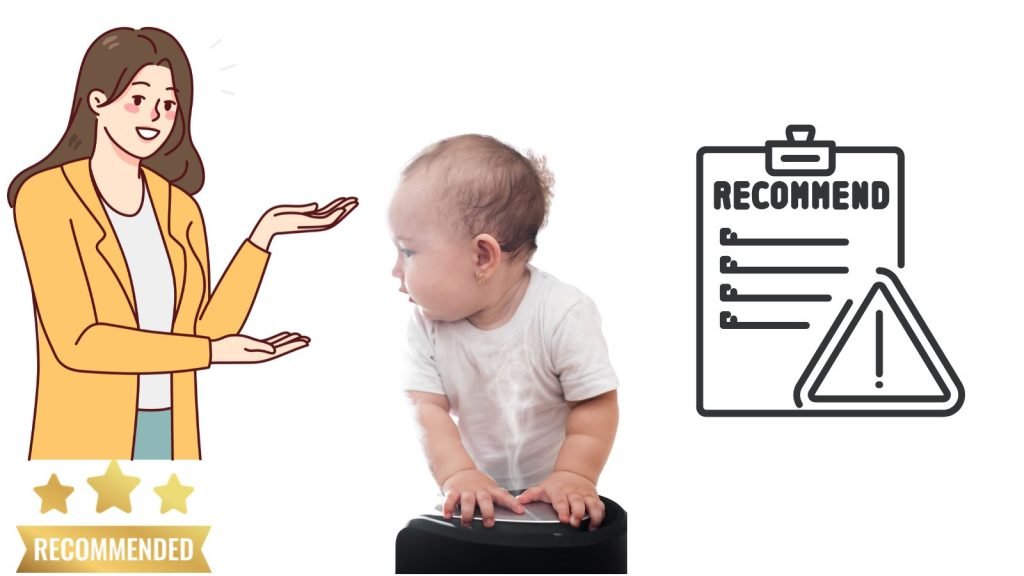
American Academy of Pediatrics Guidelines
The American Academy of Pediatrics (AAP) provides valuable advice on humidifier use for babies. They recommend cool-mist humidifiers as the safest option.
The AAP suggests using humidifiers to help ease the symptoms of common colds and congestion. They also stress the importance of proper cleaning to prevent mold and bacteria growth.
The AAP also advises maintaining ideal humidity levels between 30-50% in your baby’s room. Following these guidelines can help keep your baby safe while benefiting from added moisture in the air.
When to Consult Your Pediatrician
While humidifiers can be helpful, there are times when you should talk to your doctor. Consult your pediatrician if your baby has asthma or frequent respiratory issues.
Seek medical advice if your baby’s congestion continues or worsens despite using a humidifier.
Contact your doctor if you notice any mold in your home or if your baby develops unexplained signs like increased coughing or sneezing.
Your pediatrician can provide personalized advice on whether a humidifier suits your baby’s needs.
Medically Reviewed Best Practices
Medically reviewed sources recommend cleaning and drying your humidifier daily to prevent germ growth and using distilled water to avoid spreading minerals and other particles in the air.
Experts suggest placing the humidifier on a stable surface, out of your baby’s reach, and at least three feet from the crib.
They also emphasize not over-humidifying the room, as high humidity can promote mold growth.
Regular maintenance and proper use of humidifiers can help prevent many common issues and relieve your baby’s respiratory comfort.
Additional Considerations Humidifier
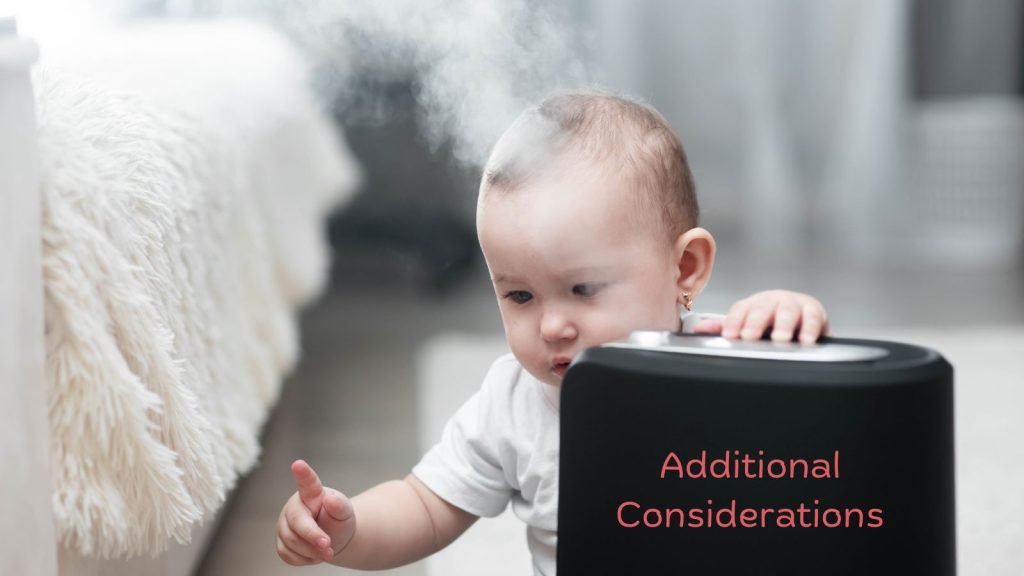
Humidifiers vs. Diffusers
Humidifiers and diffusers serve different purposes. A baby humidifier adds moisture to the air, helping with dry winter air and easing the baby’s congestion.
Diffusers spread essential oil particles but don’t humidify the air.
A humidifier is often more beneficial for a baby’s room. It can help ease breathing issues and dry skin without introducing potentially irritating fragrances.
When choosing a humidifier, focus on its ability to add moisture rather than scent.
Use of Essential Oils (Safety Concerns)
Essential oils in a baby’s room can be risky. Many experts advise against using them for infants. Essential oils can irritate a baby’s airway and skin, and some oils may cause allergic reactions.
If you’re considering essential oils, always consult your pediatrician first. For safe air quality, stick to a plain cool-mist humidifier.
These devices add moisture without additional substances, making them safer for babies.
Humidifiers and Vapor Treatments
Some parents use humidifiers with vapor treatments when their baby is sick. However, these aren’t always necessary or safe for babies.
Vaporizers that create steam with medications can pose burn risks.
Plain cool-mist humidifiers often work well to reduce coughing and ease congestion.
If you think your baby needs medicated vapors, consult your doctor first. They can advise if it’s needed and how to use it safely.
Potential to Irritate (Overuse or Misuse)
While humidifiers can help, overuse or misuse can cause problems.
Too much humidity can irritate airways and promote mold growth. Always monitor humidity levels in your baby’s room. Aim for 30-50% humidity.
Clean your humidifier regularly to prevent spreading germs or mold. If you experience more sneezing, coughing, or skin irritation, it could be due to over-humidification.
Adjust usage to find the right balance for your baby’s comfort and health.
Choosing the Right Humidifier for Your Baby
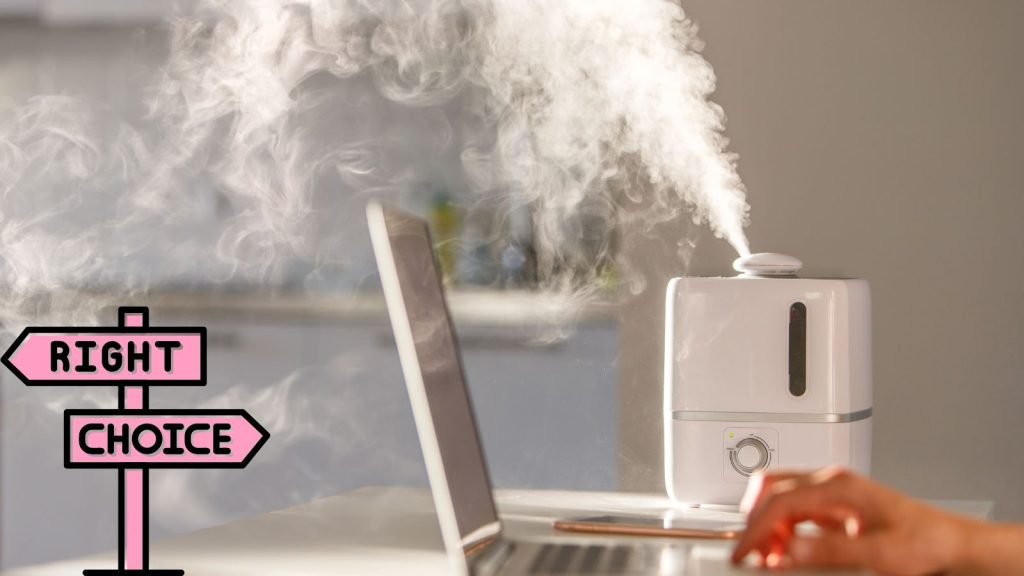
Features to Look for (Auto Shut-Off, Adjustable Settings)
When buying a humidifier, prioritize safety and convenience. Look for auto shut-off, adjustable settings, and easy-to-clean parts.
Cool-mist humidifiers with dishwasher-safe components are practical. Some units double as a noise machine, aiding sleep. These features ensure safe, effective use in your baby’s room.
Size Considerations for the Nursery
Match the humidifier size to your nursery. Too small will not humidify effectively, and too large may create high humidity.
Check the unit’s coverage area against your room size. Most nurseries suit medium-sized humidifiers. Place it on a stable surface away from the crib for optimal moisture distribution.
Budget-Friendly vs. Premium Options
Humidifiers range from basic to feature-rich. Budget options can effectively add moisture and ease congestion.
Premium models offer more settings, quieter operation, and extras like built-in hygrometers.
These can be helpful for babies with asthma or dry skin. Choose based on your needs and budget, remembering that regular cleaning is crucial for all models.
Summary
When used correctly, humidifiers can be safe and beneficial for babies. Cool-mist humidifiers are generally the safest option.
Proper placement, cleaning, and maintenance are crucial to prevent risks like mold growth or burns.
While humidifiers can help with congestion and dry skin, they’re not always necessary.
Follow expert guidelines, monitor humidity levels, and consult your pediatrician when needed. With proper care, a humidifier can be a helpful tool in your baby’s nursery.
Frequently Asked Questions
Is It Safe to Use a Humidifier in a Baby’s Room?
Yes, when used correctly. Keep it clean, maintain 30-50% humidity, and place it out of baby’s reach.
Can a Humidifier Make My Baby Sick?
Not if used properly. Clean it regularly to prevent mold and bacteria. Avoid over-humidifying, which can worsen breathing issues.
What Type of Humidifier Is Best for Babies?
Cool-mist humidifiers are generally best. They’re safe, effective, and don’t pose burn risks.
Can Humidifiers Help with Baby Congestion?
Yes, they can ease congestion by adding moisture to the air, which thins mucus. For persistent issues, consult your pediatrician.
Are Warm or Cool Mist Humidifiers Better for Babies?
Cool mist is typically better. It’s safer with no burn risk and equally effective at adding moisture. Warm mist can be soothing but requires extra caution.
